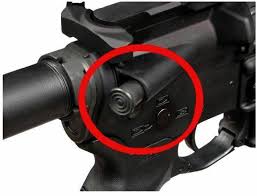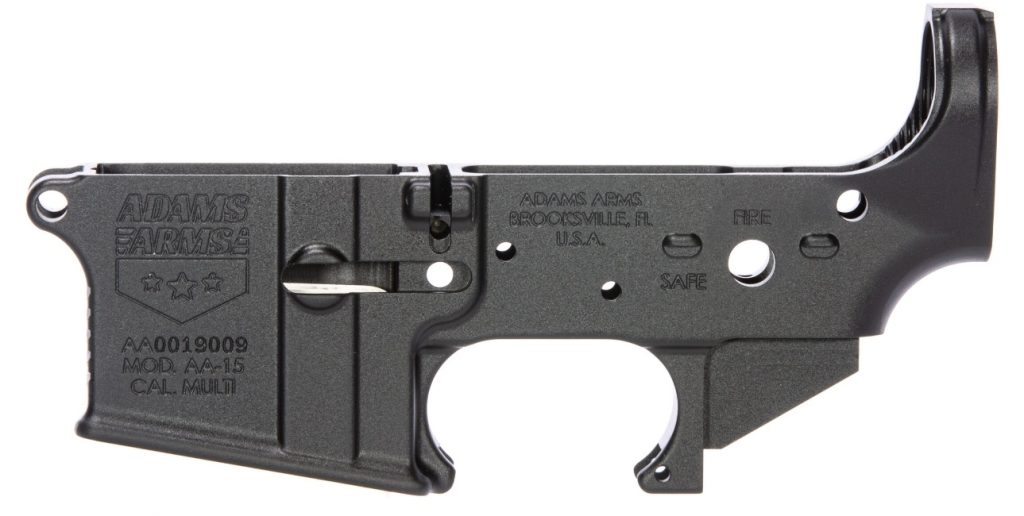In the heart of America’s firearm landscape stands an icon of adaptability and precision, a weapon that has become synonymous with versatility and efficiency: the AR-15.
But what is it about this rifle that captures the imagination of enthusiasts and professionals alike? The AR-15 isn’t just a firearm; it’s a symbol of innovation, seamlessly blending sporting prowess with defensive capabilities. With a standard configuration that offers a canvas for personalization, it’s no wonder this rifle has found its way into the hands of law enforcement and special operations teams worldwide.
The AR-15 isn’t strictly bound by limitations—it’s a platform built for adaptation and versatility. Going forward, we’re going to delve deeper into its components, from muzzle to butt, we uncover a story of craftsmanship and functionality that continues to captivate shooters of all backgrounds.

So, what makes the AR-15 not just a rifle, but a versatile marvel in the world of firearms?
Let’s dive deep to unravel!
Decoding the AR-15: A Beginner's Primer
“AR” in AR-15 stands for Armalite Rifle, not “Assault Rifle.” This semi-automatic rifle, intended for civilian use, is a derivative of the military M16. It’s a common choice for sporting, law enforcement, and home defense. The open-source nature of its design means that parts and components are readily available from various manufacturers, negating the need to focus on any single brand.
Embarking on your journey with the AR-15 is straightforward, thanks to its uncomplicated assembly and maintenance. It’s a firearm that promises longevity in popularity and use. If you’re considering entering the world of the modern sporting rifle, the AR-15 is an essential addition to your arsenal.
Standard Configuration of an AR-15
The standard configuration of an AR-15 is designed for versatility and adaptability. Typically, it features a Carbine length with a 16″ barrel, striking a balance between maneuverability and accuracy. Integral to the AR-15’s reliability and performance are its Mil-Spec core components, which adhere to military specifications for quality and durability. However, what truly sets the AR-15 apart is its extensive customization options. From handguards to optics, the aftermarket support for accessories and upgrades is vast, offering shooters the opportunity to tailor their rifles to their specific preferences and shooting style.

Figure 1 Adams Arms P1 5.56 16″
Ammunition Varieties for the AR-15
The AR-15’s compatibility with various ammunition types makes it incredibly versatile in terms of ammunition compatibility. Some of the most commonly used calibers include:
- .223 Remington
- 5.56x45mm NATO
- .17 HMR
- .22 LR
- .300 AAC Blackout
- 6.5 Grendel
- 6.8 SPC
- 7.62x39mm
- .458 SOCOM
- .50 Beowulf
And many more, making the AR-15 incredibly versatile in terms of ammunition compatibility.
The Gas System: DI vs. Piston
In the realm of AR-15 rifles, the gas system reigns supreme as a cornerstone of functionality. With two primary types—Direct Impingement (DI) and Gas Piston—each offering unique advantages, understanding their differences is crucial for enthusiasts and professionals alike.
In the DI system – gases generated from a fired round travel through a gas tube directly into the bolt carrier group (BCG), facilitating the cycling of the rifle. While effective in operation, this setup often results in increased residue buildup, necessitating regular cleaning to maintain optimal performance.
On the other hand, Gas Piston systems operate differently, utilizing a piston driven by the gas to cycle the BCG. This innovative design effectively keeps hot gases and residue out of the receiver, resulting in a cleaner, cooler, and more reliable operation overall. Not only does the piston system reduce wear and tear on internal parts, but it also enhances reliability, particularly in challenging conditions.
From the magazine feeding rounds to the BCG chambering and ejecting them, every component of the AR-15 plays a vital role in its performance. However, it’s the gas system—whether DI or piston—that truly dictates the rifle’s overall functionality and maintenance requirements, making it a crucial consideration for enthusiasts seeking peak performance from their firearm.

Are you interested in delving deeper into the reasons why PistonARs outperform Direct Impingement (DI) systems?
Vist our latest blog post to explore further. Click here

Figure 2 Mil Spec Direct Impingement System

Figure 3 Adams Arms Piston System
Difference Between Fully Automatic and Semiautomatic Rifles
Semiautomatic rifles, like the AR-15, fire one round per trigger pull. In contrast, fully automatic rifles continue firing as long as the trigger is held down.
Here’s a quick comparison:
| COMPARISON POINTS | FULLY AUTOMATIC RIFLES | SEMI-AUTOMATIC RIFLES |
| Firing Mechanism | Fires continuously as long as the trigger is held down. | Fires one round per trigger pull, requiring the trigger to be released and pulled again for subsequent shots. |
| Rate of Fire | Can achieve a high rate of fire, often measured in RPM. | Generally has a slower rate of fire compared to fully automatic rifles. |
| Control and Accuracy | Can be more difficult to control due to recoil and rapid succession of shots. | Offers better control and accuracy as the shooter can focus on aiming between each shot. |
| Ammunition Consumption | Consumes ammunition rapidly due to continuous firing. | Utilizes ammunition more conservatively, firing one round at a time. |
| Versatility | Suited for specific combat scenarios where suppressive fire or high-volume shooting is necessary. | Offers versatility for various purposes including hunting, target shooting, and self-defense. |
| Training and Skill Requirements | Requires additional training to effectively control recoil and manage ammunition expenditure. | Generally easier for shooters to learn and master due to its simpler firing mechanism and control. |
Understanding the Forward Assist and Charging Handle
The forward assist on the AR-15, a remnant from its military heritage, is designed to ensure the Bolt Carrier Group (BCG) is fully seated, particularly in dirty or adverse conditions. However, its necessity in civilian use is often debated.
The charging handle, on the other hand, is crucial for manually operating the rifle, and facilitating tasks such as loading or clearing rounds. Available in various designs to accommodate different operational preferences, the charging handle complements the AR-15’s functionality alongside the forward assist.
The forward assist on the AR-15, a remnant from its military heritage, is designed to ensure the Bolt Carrier Group (BCG) is fully seated, particularly in dirty or adverse conditions. However, its necessity in civilian use is often debated.
The charging handle, on the other hand, is crucial for manually operating the rifle, and facilitating tasks such as loading or clearing rounds. Available in various designs to accommodate different operational preferences, the charging handle complements the AR-15’s functionality alongside the forward assist.

Figure 4 AR15 Charging handle

Figure 5 AR 15 Forward Assist
The Importance of Iron Sights & Right Buttstock
Iron sights are crucial as a fail-safe sighting mechanism for rifles, even when advanced optics are used. They ensure the rifle’s readiness under any circumstance and come in flip-up and offset styles. Additionally, choosing the right buttstock is essential for the rifle’s handling and comfort, with selection based on the shooter’s needs and preferences.

Figure 6 Flip up Backup Sights

Figure 7 Mil spec buttstock
The Lower Receiver: The Core of the AR-15
The lower receiver of an AR-15 rifle serves as both its legal and functional foundation. It houses the rifle’s serial number, a crucial identifier for regulatory and ownership purposes, necessitating regulated processes for any transfer or acquisition of the lower receiver as mandated by firearm laws.
Moreover, the lower receiver plays a vital role in the assembly of the AR-15 rifle, serving as the structural framework to which other components like the trigger assembly, pistol grip, and stock are attached.

Figure 8 Adams Arms Forged Lower Receiver
FAQs
No, the AR-15 is not a military-grade weapon. While it shares some design similarities with military rifles, the AR-15 available to civilians is semi-automatic, meaning it fires one round per trigger pull, unlike military rifles which are capable of fully automatic or select fire.
The number of rounds in an AR-15 can vary depending on the specific magazine used. Standard AR-15 magazines typically hold either 10, 20, or 30 rounds, but there are also extended magazines available that can hold up to 40, 60, or even more rounds.
No, the AR-15 available to civilians is not fully automatic. It is semi-automatic, meaning it fires one round per trigger pull. Fully automatic versions of the AR-15 are restricted to military and law enforcement use.
Final Reflections
In conclusion, the AR-15’s remarkable modularity and adaptability across different gas systems and calibers solidify its status as a top choice for diverse applications. Whether utilized for sporting purposes, self-defense, or by law enforcement agencies, the AR-15 stands as a testament to unparalleled innovation and versatility within the realm of firearms.
Its enduring popularity and widespread use underscore its enduring legacy as a symbol of adaptability and reliability, continuously meeting the evolving needs of shooters across various disciplines. As we navigate the complex landscape of firearm technology, the AR-15 remains an enduring icon, embodying the spirit of innovation and adaptability that defines the modern firearms industry.

